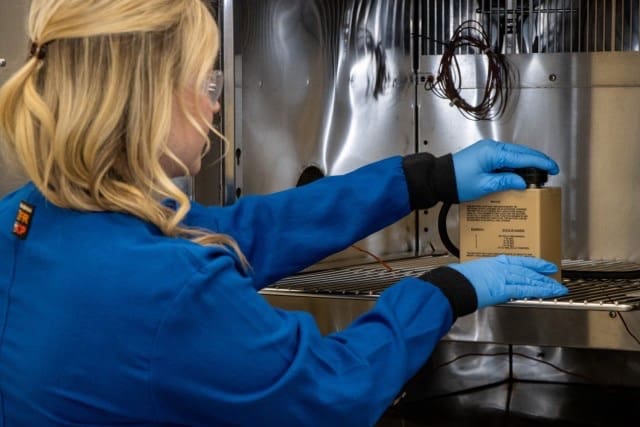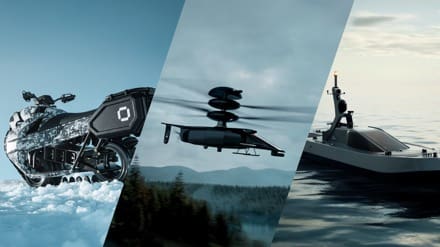Brunnthal/Munich, Germany, 13 May 2025 – SFC Energy AG (“SFC”, F3C:DE, ISIN: DE0007568578), a leading provider of fuel cells for stationary, portable and mobile hybrid power solutions, has announced a key collaboration with Polaris Government and Defense (“Polaris”) at Special Operations Forces Week (“SOF Week”) in Tampa, Florida, USA. Polaris showcased a high-mobility tactical vehicle with the EMILY 3000 as an optional integrated power supply. This capability is specifically being offered to NATO and NATO-aligned defense organisations.
Installing SFC Energy’s EMILY 3000 in the Polaris’ MRZR vehicle platform provides a highly reliable power solution available for mission-critical applications. The methanol fuel cell-based system can power radios, surveillance systems, drone equipment, sensors, and other electronic devices – all without the need to run the vehicle’s engine. This enables extended operations while preserving camouflage and reducing both thermal and acoustic signatures.
The EMILY 3000 delivers a dependable and autonomous power supply for a variety of electronic and communication systems. Weighing only 12 kilograms (approximately 26.5 pounds), it increases power output on lightweight tactical vehicles without compromising mobility. Its high energy density enables for extended runtimes and minimises the need for refuelling during prolonged operations. One of its key advantages is its virtually silent performance, producing minimal acoustic and thermal signatures – making it exceptionally well-suited for covert operations.
The system supports the simultaneous charging and use of various battery types, including lithium-ion, lithium-polymer, and conventional lead-acid batteries. In contrast to traditional setups, it eliminates the need to run the vehicle engine or rely on noisy generators. This reduces fuel consumption, acoustic exposure, and the risk of early detection. Fully automatic in operation, the EMILY 3000 contributes to longer battery life and reduced vehicle wear by cutting down on engine use and maintenance.
Its flexibility also enables the system to function either as an onboard charger or as a portable, field-based power supply. Additionally, the EMILY 3000 and its fuel cartridges are military-certified, carry a NATO supply number, and are approved for air transport in accordance with UN3473 regulations – making them fully deployable in international operations.
By integrating the EMILY 3000, Polaris light tactical vehicles gain enhanced operational endurance and power autonomy – especially critical in scenarios where silence, reliability, and energy independence are key tactical requirements.
Dr. Peter Podesser, CEO of SFC Energy AG: “By offering the EMILY 3000 as an accessory option in Polaris vehicles, we are delivering a mission-ready, low-signature power solution tailored to the needs of modern armed forces. The Polaris MRZR is widely deployed by the United States and other NATO and allied forces worldwide for its exceptional off-road mobility and versatility. By including our innovative and field-proven fuel cell technology on this trusted platform, military forces can significantly enhance their operational range, energy autonomy, and tactical utility in real-world missions.”
Further information on SFC Energy’s Clean Energy and Clean Power Management solutions can be found at www.sfc.com.



















































































































